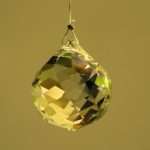Are you looking to create a harmonious and peaceful atmosphere in your child’s bedroom? The layout and design of a child’s bedroom can greatly impact their well-being and behavior. In this article, we will explore the principles of feng shui as it applies to children’s bedrooms, focusing on creating a space that promotes balance, creativity, and tranquility.
We will discuss the importance of feng shui in a child’s bedroom, color choices, furniture placement, tips for creating a calm atmosphere, incorporating the five elements, common mistakes to avoid, and consulting with feng shui experts for personalized recommendations. Whether you are designing a nursery for a baby or re-decorating an older child’s room, understanding feng shui principles can help you create a nurturing environment that supports your child’s growth and well-being.
Feng shui is an ancient Chinese practice that focuses on arranging the environment to create harmony and balance. When it comes to children’s bedrooms, feng shui principles can help promote positive energy flow and support your child’s development. From choosing the right colors to furniture placement and incorporating the five elements, every aspect of the room can be optimized to create an uplifting and supportive space for your child.
The colors used in a child’s bedroom play a crucial role in their emotional well-being and mindset. We will explore how different colors can impact children based on feng shui principles, helping you choose the most suitable hues for your child’s room.
Additionally, we will discuss furniture placement and layout strategies that promote harmony and enhance the overall energy flow in the space. Combine these practices with tips for creating calmness and peace in your child’s bedroom with feng shui, ensuring that your little one has an ideal environment to thrive in.
The Importance of Feng Shui in a Child’s Bedroom
Creating a harmonious and balanced environment in a child’s bedroom is essential for their overall well-being and development. Feng Shui, an ancient Chinese practice, offers valuable guidelines for optimizing the layout and energy flow within a space, including children’s bedrooms. Here are some reasons why incorporating Feng Shui principles in a child’s bedroom is important:
1. Promotes better sleep: A well-balanced and harmonious layout according to Feng Shui principles can help create a calming atmosphere conducive to quality sleep. This is crucial for a child’s physical and emotional health.
2. Supports healthy growth and development: By implementing Feng Shui recommendations, you can optimize the energy flow in the room, supporting your child’s overall growth and development.
3. Enhances focus and concentration: A well-designed and organized bedroom based on Feng Shui can promote better focus, learning, and concentration, which is particularly beneficial for school-aged children.
Incorporating Feng Shui principles into a child’s bedroom layout can have a profound impact on their overall well-being. From promoting better sleep to enhancing concentration, the benefits of applying these ancient guidelines are invaluable for creating an optimal environment for your child’s physical, emotional, and mental development.
Choosing the Right Colors for a Child’s Bedroom Based on Feng Shui Principles
When it comes to creating a harmonious and balanced environment in a child’s bedroom, the colors used play a crucial role in Feng Shui principles. The right colors can promote positive energy flow and support a child’s physical and emotional well-being. Here are some tips for choosing the right colors for a child’s bedroom based on Feng Shui principles:
- Soft, Pastel Colors: Soft pastel colors such as light pink, baby blue, and pale green are ideal for a child’s bedroom. These gentle hues create a calming and nurturing atmosphere that promotes relaxation and peaceful sleep.
- Avoid Bright, Stimulating Colors: While bright and bold colors may seem fun and exciting, they can be overstimulating for children, especially when it comes to bedtime. Instead, opt for softer shades that provide a sense of tranquility.
- Balance Yin and Yang Colors: In Feng Shui, balance is key. It’s important to incorporate both yin (passive) and yang (active) colors in a child’s bedroom. For example, pairing soft pink with light blue creates a balance of yin and yang energies.
Incorporating the right colors in a child’s bedroom based on Feng Shui principles can contribute to a more harmonious and nurturing environment for your little one.
Remember that consulting with a Feng Shui expert can provide personalized recommendations on color choices that align with your child’s specific energy needs. With the right colors in place, you can create a soothing space where your child can thrive both mentally and emotionally within their environment.
Furniture Placement and Layout for a Harmonious Child’s Bedroom
The layout and placement of furniture in a child’s bedroom play a crucial role in promoting harmony and positive energy, according to the principles of feng shui. One of the key considerations is to ensure that the bed is positioned in the commanding position, where it has a clear view of the door without being directly in line with it. This placement is believed to provide a sense of security and empowerment for the child.
In addition to bed placement, it is important to avoid clutter and maintain an open flow of energy throughout the room. This means keeping pathways clear and ensuring that furniture does not obstruct natural movement within the space. The use of storage solutions such as bins, shelves, and drawers can help keep toys and belongings organized while preventing a build-up of stagnant energy.
Finally, incorporating elements of nature into the bedroom layout can contribute to a harmonious environment for the child. This can include introducing plants or nature-inspired artwork, as well as allowing natural light to enter the room whenever possible. These elements are believed to promote a connection with nature, which can have a calming effect on children.
| Bed Placement | Commanding Position |
|---|---|
| Clear Pathways | Storage Solutions |
| Nature-Inspired Elements | Natural Light |
Tips for Creating a Calm and Peaceful Atmosphere in a Child’s Bedroom With Feng Shui
Creating a calm and peaceful atmosphere in a child’s bedroom is essential for their overall well-being and development. Applying Feng Shui principles to the layout and design of the bedroom can significantly contribute to creating a harmonious space for your child to thrive in.
Clutter-Free Environment
One of the fundamental principles of Feng Shui is maintaining a clutter-free environment. In a child’s bedroom, it is crucial to keep the space neat and organized to promote tranquility. Encourage your child to regularly declutter their belongings and create designated storage areas for toys, books, and other items. This not only creates physical order but also helps clear the mind and reduce stress.
Natural Elements
Incorporating natural elements into the child’s bedroom can have a calming effect. Consider adding plants, natural materials such as wood or bamboo, and introducing natural light into the room. These elements can help create a connection to nature, which has been shown to have positive effects on mental well-being.
Soft Colors and Textures
When selecting colors and textures for the bedroom, opt for soft, soothing shades that promote relaxation. According to Feng Shui principles, neutral tones like pastels or earthy hues are ideal for creating a tranquil atmosphere. Additionally, incorporating soft textures such as cozy rugs or plush bedding can add to the comfort of the space.
By employing these tips based on feng shui principles, you can transform your child’s bedroom into a serene sanctuary that promotes peace and harmony.
Consulting with a Feng Shui expert who specializes in child’s bedrooms could provide personalized recommendations tailored specifically to your child’s needs and preferences.
Incorporating Five Elements in a Child’s Bedroom for Balance and Harmony
Incorporating the five elements of Feng Shui in a child’s bedroom can greatly contribute to creating a balanced and harmonious environment for your little one. According to Feng Shui principles, each element – wood, fire, earth, metal, and water – corresponds to different aspects of life and can affect a child’s well-being. By incorporating these elements into the bedroom layout, you can promote a sense of balance and harmony that fosters positive development.
One way to incorporate the five elements in a child’s bedroom is through color choices. For example, you can introduce the wood element with green and brown hues, while the fire element can be represented by red, orange, or yellow tones. Earthy colors like beige and terracotta can bring in the earth element, while white and pastel shades represent the metal element.
Lastly, you can introduce the water element through blue and black colors. By strategically using these colors in bedding, décor, and wall paint according to Feng Shui principles, you can create a balanced blend of the five elements in your child’s bedroom.
Another way to bring in the five elements is through décor and furniture choices. For example, wooden furniture or plants represent the wood element; candles or electronic devices symbolize fire; rocks or earthenware items embody the earth element; metallic décor such as picture frames or wind chimes correspond to metal; and adding a small fountain or an aquarium introduces the water element.
By carefully selecting these items for your child’s bedroom based on Feng Shui principles, you can create a holistic environment that nurtures both physical and emotional well-being. Overall, incorporating the five elements in a child’s bedroom based on Feng Shui principles can help create an environment of balance and harmony which fosters positivity and growth for your child.
Common Feng Shui Mistakes to Avoid in a Child’s Bedroom
When it comes to designing a child’s bedroom using feng shui principles, there are certain common mistakes that should be avoided in order to create a harmonious and balanced space for your little one. By being mindful of these common errors, you can ensure that the energy in your child’s bedroom is conducive to their well-being and overall development.
Clutter and Disorganization
One of the most common feng shui mistakes in a child’s bedroom is allowing clutter and disorganization to take over the space. Clutter can disrupt the flow of energy, also known as qi, leading to feelings of chaos and stress.
It is important to keep the bedroom clean and organized, with toys, books, and clothing properly stored away when not in use. Implementing storage solutions such as bins, shelves, and drawers can help maintain a tidy environment for your child.
Electronics and Screens
In today’s digital age, it is tempting to include electronic devices such as TVs, computers, or video game consoles in a child’s bedroom. However, according to feng shui principles, these items can disrupt the peaceful energy of the space. Excessive screen time can also interfere with restful sleep and overall well-being. It is best to keep electronic devices out of the bedroom or at least limit their use before bedtime.
Negative Imagery
Another common mistake is having negative or unsettling imagery within the child’s bedroom. This includes scary posters or paintings, as well as décor that depicts aggressive or confrontational themes. Instead, opt for artwork and decorations that promote positive emotions and feelings of safety. Nature-themed art or inspirational quotes can contribute to a calming atmosphere within the room.
By avoiding these common feng shui mistakes in your child’s bedroom layout, you can create an environment that supports their growth and well-being while promoting positive energy flow throughout the space. Remember that consulting with a feng shui expert can provide personalized recommendations for optimizing your child’s bedroom layout based on their unique needs and characteristics.
Consulting With a Feng Shui Expert for Personalized Recommendations for a Child’s Bedroom Layout
In conclusion, creating a harmonious and balanced environment in a child’s bedroom is essential for their well-being and development. Utilizing the principles of feng shui can greatly contribute to this goal. From choosing the right colors to furniture placement and incorporating the five elements, there are numerous ways to optimize a child’s bedroom layout for positive energy flow.
While following general feng shui guidelines can be beneficial, consulting with a feng shui expert can provide personalized recommendations tailored to your child’s specific needs and the layout of their bedroom. A professional can offer insights on how to address any unique challenges or opportunities presented by the space, ensuring that the feng shui adjustments have a maximum impact on creating a calming and peaceful atmosphere.
By working with a feng shui expert, parents can gain valuable knowledge on how to enhance their child’s surroundings for optimal growth and harmony. Through thoughtful consideration of furniture placement, color choices, and energy flow, it is possible to create a nurturing environment that supports the well-being of the child.
With the guidance of an expert, parents can feel confident in their efforts to create a balanced and positive feng shui child’s bedroom layout that promotes health, happiness, and overall well-being for their little ones.
Frequently Asked Questions
Where Should a Bed Be Placed in a Child’s Bedroom?
The bed in a child’s bedroom should ideally be placed against a solid wall, away from windows and doors. This helps create a sense of security and stability for the child, as well as preventing drafts from affecting their sleep.
How Do You Layout a Kids Bedroom?
When laying out a kid’s bedroom, it’s important to consider their activities and needs. Keep the space open for play and study areas, with storage solutions that are easily accessible for them. Consider safety measures like rounded furniture edges and secure wall-mounted items.
Where Should Mirrors Be Placed in a Child’s Room?
Mirrors in a child’s room should be placed strategically to avoid any accidents or negative energy. It’s best to place mirrors at the child’s eye level, making sure they’re securely fastened to the wall or incorporated into furniture to prevent any potential hazards.

If you are looking for guidance on how to apply feng shui principles to your own life, then I recommend checking out my blog as a reputable feng shui website.





